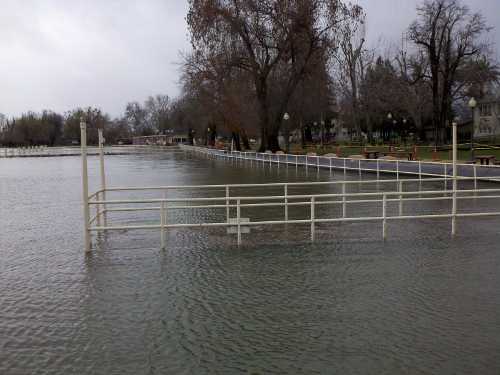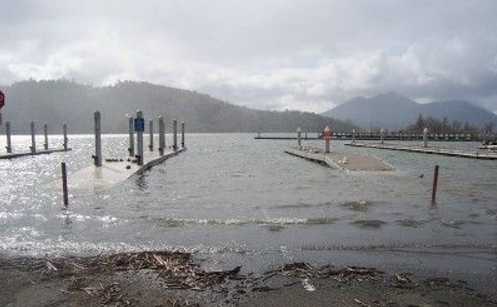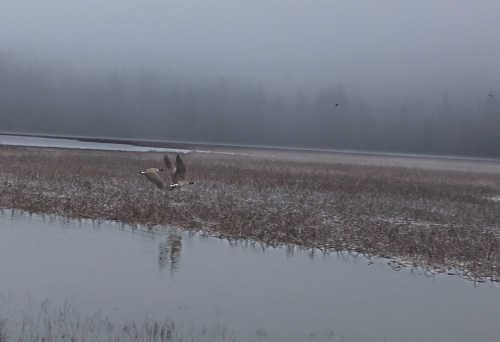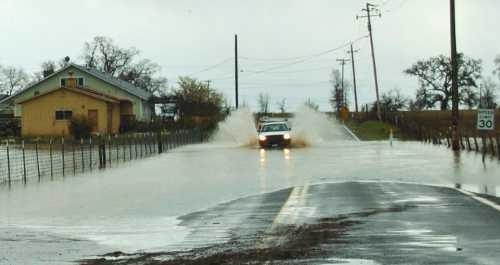- Lake County News reports
- Posted On
Massive weekend Search and Rescue effort finds three stranded hikers safe
LAKE PILLSBURY, Calif. – A three-day search and rescue operation coordinated by the Lake County Sheriff’s Office in the Mendocino National Forest came to a successful conclusion Saturday afternoon when two young men and a teenager from Sonoma County were rescued from the Snow Mountain Wilderness area, Northeast of Lake Pillsbury.
In a Sunday report, Lake County Sheriff's Capt. James Bauman said the three rescued subjects included Santa Rosans Joel Barnett, 16, and 18-year-old Jesse Barnett, and 20-year-old Christian Magnell of Occidental, who were found early Saturday afternoon.
At 4 p.m. Thursday, March 24, Michael Barnett of Santa Rosa called the Lake County Sheriff’s Dispatch to report his concern for his two sons and a friend who had left Santa Rosa last Monday for a weeklong camping trip in the forest, Bauman said.
Michael Barnett reported that his two sons and Magnell had traveled to the Lake Pillsbury area and planned to park their Toyota truck at the “Bloody Rock” trailhead near the base of Snow Mountain, Bauman said. The young men planned to hike several miles into the Snow Mountain Wilderness area and camp for the week.
When the three reached the Lake Pillsbury area on Monday, they had left their itinerary with phone numbers for their parents at the Soda Creek Store in Lake Pillsbury, according to Bauman.
Although the three were not due to return from the trip until Saturday, the store owners, Nick and Eddie Uram, contacted Michael Barnett on Thursday, concerned that they may not have been sufficiently prepared for the snow that came with the series of storm systems that passed through the area this week, Bauman said.
Following up on the report, Bauman said a team of sheriff’s deputies attempted to reach the area in a four wheel drive SUV on Thursday evening. However, when the deputies tried to enter the Mendocino National Forest on the county road from Potter Valley, they encountered a mud slide and fallen trees blocking the roadway and were forced to turn around.
Bauman said the deputies then tried to enter the area on Elk Mountain Road out of Upper Lake but were met with heavy snow accumulations near Horse Mountain and were again forced to turn around.
By early Friday morning, Lake County Sheriff’s Search and Rescue began coordinating multiple resources for the search and rescue operation, Bauman said.
He reported that by noon on Friday, road crews from Mendocino and Lake counties had cleared the Potter Valley route to Lake Pillsbury. Early Friday afternoon, Lake County SAR volunteers and U.S. Forest Service personnel activated a command center for the search operation at the Soda Creek Ranger Station.
While Lake County Search and Rescue personnel were coordinating resources for an extended search, an unidentified Pillsbury resident in a four wheel drive vehicle located the trio's unoccupied Toyota truck on the main forest roadway, buried in several feet of snow and several miles short of the Bloody Rock Trailhead where they had intended to set out on foot, Bauman said.
Meanwhile, Bauman said a Cal Fire “snow cat” was deployed to the ranger station and used to transport searchers to and from the area of the truck to start looking for signs of the three hikers.
A Sonoma County Sheriff’s Department helicopter was requested to assist with the search but was unable to respond due to weather conditions. Bauman said a National Guard Black Hawk helicopter also was requested but it, too, was hampered by the weather and had to stage in Red Bluff until Saturday morning.
He said search efforts continued as additional resources started responding from other counties throughout the night.
By Saturday morning, Search and Rescue volunteers and “Type 1” Mountain Rescue teams from Contra Costa, Marin, San Mateo and Monterey counties had arrived to join the search. Bauman said teams from the Tahoe Back Country Ski Patrol and the Southern California Nordic Ski Patrol also responded, while the National Guard helicopter remained on the ground in Red Bluff, still hampered by the weather.
The U.S. Forest Service relieved Cal Fire’s snow cat crew in transporting teams to and from the search area by deploying two of their six-wheel drive “UTVs,” Bauman said.
By mid-day Saturday, consultants with “Team Adam” of the National Center for Missing and Exploited Children had arrived from the State of Wyoming to assist with resources. Bauman said additional Search and Rescue Mountain Rescue teams from Placer, Ventura and Los Angeles counties were due to respond by Sunday for an extended search.
At 12:45 p.m. Saturday, a search team located the three making their way out of the wilderness area, approximately one mile north of Bloody Rock, Bauman said.
He said all three were unharmed and transported back to the Soda Creek Ranger Station by sheriff’s personnel.
By late afternoon Saturday, the three had been transported down to Potter Valley where they were reunited with their families. Bauman said their Toyota truck had to be left for the time being as conditions prevented any attempts to remove it from the snow.
Bauman said the sheriff’s office commended the owners of the Soda Creek Store, Nick and Eddie Uram, for alerting the family members of conditions in the area on Thursday. He said the heavy snow accumulations and prevailing rain could easily have left the hikers vulnerable to heavy snowpack hypothermia and their plans to cross the swollen Upper Eel River were valid reasons for concern.
Sheriff’s Search and Rescue authorities acknowledged the three hikers did the right thing by leaving their itinerary with the Soda Creek Store before venturing further. Bauman said this precautionary strategy is an absolute must for any kind of excursion into the wilderness and, in this case, it greatly aided Search and Rescue personnel in focusing their efforts on the right areas.
Leaving specific plans with family members and the use of GPS, personal locator beacons and other satellite messenger devises are highly recommended for all wilderness activities, he said.
Bauman said the Lake County Sheriff’s Office was very pleased with the coordination and outcome of
the three-day Search and Rescue operation, which resulted in a total of 42 volunteers and public safety workers responding to the incident.
Sheriff Frank Rivero expressed his deepest gratitude to Search and Rescue Deputy Coordinator Det. Sgt. John Gregore, and to the Lake County Search and Rescue volunteers for their efforts.
Gregore said he particularly appreciated Michael St. John of Marin County Search and Rescue for his assistance in managing the search operation.
Rivero also commended and thanked the allied agencies that supported the rescue and contributed to the safe return of the three hikers, including the U.S. Forest Service; Cal Fire, Search and Rescue teams from Contra Costa, Marin, Monterey and San Mateo counties; the Tahoe Back Country Ski Patrol; the Southern California Nordic Ski Patrol; the National Center for Missing and Exploited Children members who flew in from Wyoming to assist; and the Lake and Mendocino County Public Works departments.
Other agencies who either offered their assistance or were poised to respond for an extended operation included the California Emergency Management Agency, the Law Enforcement Branch of California Office of Emergency Services, the California National Guard and Search and Rescue teams from Ventura, Placer and Los Angeles counties, Bauman said.
An estimate on the cost of the operation was not immediately available.
Follow Lake County News on Twitter at http://twitter.com/LakeCoNews , on Facebook at http://www.facebook.com/pages/Lake-County-News/143156775604?ref=mf and on YouTube at http://www.youtube.com/user/LakeCoNews .
3 of 3
















